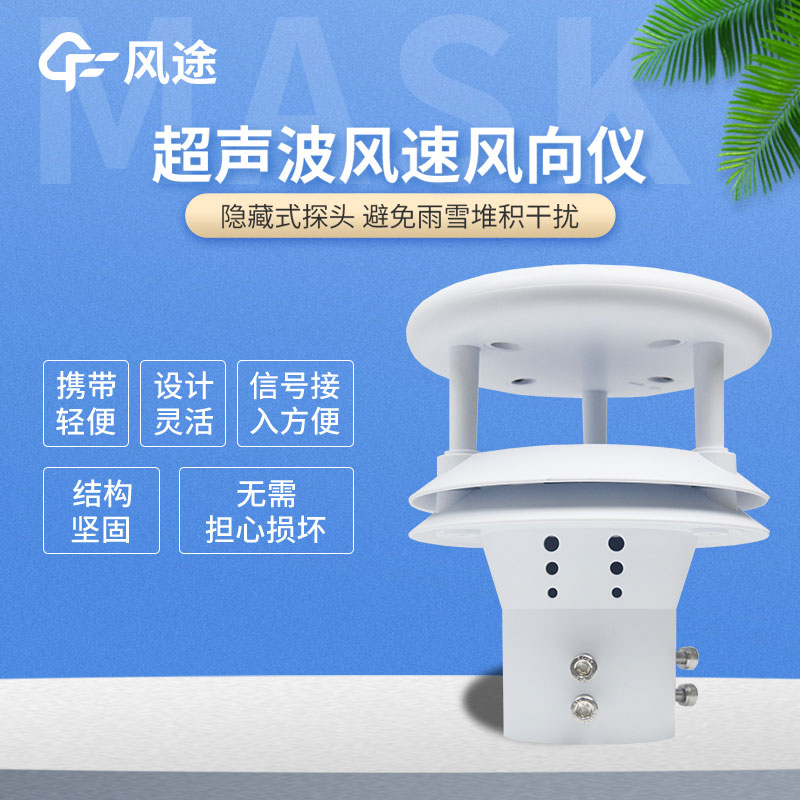Shandong Fengtu IOT Technology Co., Ltd
Sales Manager:Ms. Emily Wang
Cel,Whatsapp,Wechat:+86 15898932201
Email:info@fengtutec.com
Add:No. 155 Optoelectronic Industry Accelerator, Gaoxin District, Weifang, Shandong, China

Sales Manager:Ms. Emily Wang
Cel,Whatsapp,Wechat:+86 15898932201
Email:info@fengtutec.com
Add:No. 155 Optoelectronic Industry Accelerator, Gaoxin District, Weifang, Shandong, China
time:2023-09-18 17:26:18 source:Weather Station viewed:396 time
A wind sensor is a sensor device used to measure and record the direction of the wind, usually in the fields of meteorology, environmental monitoring and agriculture. It calculates the wind direction by measuring the wind speed and, based on the principles of hydrodynamics. These sensors usually provide wind direction data in real time or at regular intervals, and are important for weather forecasting, wind energy utilization, aviation safety, and agricultural production.
Why measure wind speed?
Measuring wind direction is an important area of study in meteorology that can help us better understand and predict climate conditions. In meteorology, wind direction refers to the direction of air movement on earth, which reflects the direction and speed of atmospheric flow. By measuring the wind direction, we can get the following information:
1. Climate analysis: wind direction is crucial for analyzing climate conditions. For example, an area is affected by strong northeast winds, which means that the area may be experiencing strong cold air currents. By measuring the wind direction, we can understand the source, strength and trend of these air currents, and thus predict future climate conditions.
2. Atmospheric circulation: Atmospheric circulation is an important part of the global climate system, which influences the ecological environment on earth by regulating temperature, humidity, precipitation and other elements between different regions. Measuring wind direction can help us better understand the movement patterns of atmospheric circulation and thus predict climate change and extreme weather events.
3. Aviation and navigation safety: In aviation and navigation, wind direction is crucial to flight safety and route selection. For example, during flights, pilots need to know the local wind direction and speed in order to choose appropriate flight routes and landing sites. In addition, wind has a great impact on the stability and speed of ships, so measuring wind direction is crucial to ship safety.
4. Agriculture and forestry: Wind direction has a great impact on agriculture and forestry production. For example, in agriculture, proper wind direction helps grain ripening and harvesting, while strong winds may cause crops to fall and reduce yields. In forestry, wind direction affects the direction of growth and canopy structure of trees, thus affecting the ecological balance of forests.
5. Environmental monitoring: Measuring wind direction can help us understand the diffusion and spread of atmospheric pollutants, thus providing a scientific basis for environmental protection and governance. For example, in the monitoring of urban air pollution, wind direction data can help us determine the source and scope of pollution more accurately, and provide a basis for the development of air quality improvement measures.
In summary, measuring wind direction is of great significance in many fields such as meteorology, climate analysis, atmospheric circulation, aviation and navigation safety, agriculture and forestry, and environmental monitoring. Through the study of wind direction, we can better understand the operation law of the earth's climate system and contribute to global sustainable development.

Soil moisture monitoring system can continuously monitor soil moisture for a long time. Users can install soil moisture sensors at different locations and depths according to their needs. The system also supports the addition of other sensors for measuring soil temperature, conductivity, pH, as well...
The automatic agricultural weather station is capable of automatic sensing, monitoring, warning and analysis of weather, moisture, soil and crop growth, and is so systematic that it achieves intelligent seedling, precision sowing, precision fertilisation, precision irrigation, precision spraying and...
In weather monitoring and various industrial applications, the performance of wind speed sensors is crucial. Today, we will conduct a comprehensive unboxing review of the Ultrasonic Anemometer FT-WQX2 to gain an in-depth understanding of its features.1. First Impressions Upon UnboxingThe FT-WQ...
Visibility is inextricably linked to weather, you see:Weather phenomena have a direct effect on visibility. For example, weather phenomena such as fog, haze, rainfall, and snowfall can reduce visibility and blur vision.Weather changes also affect visibility. For example, before and after the passage...